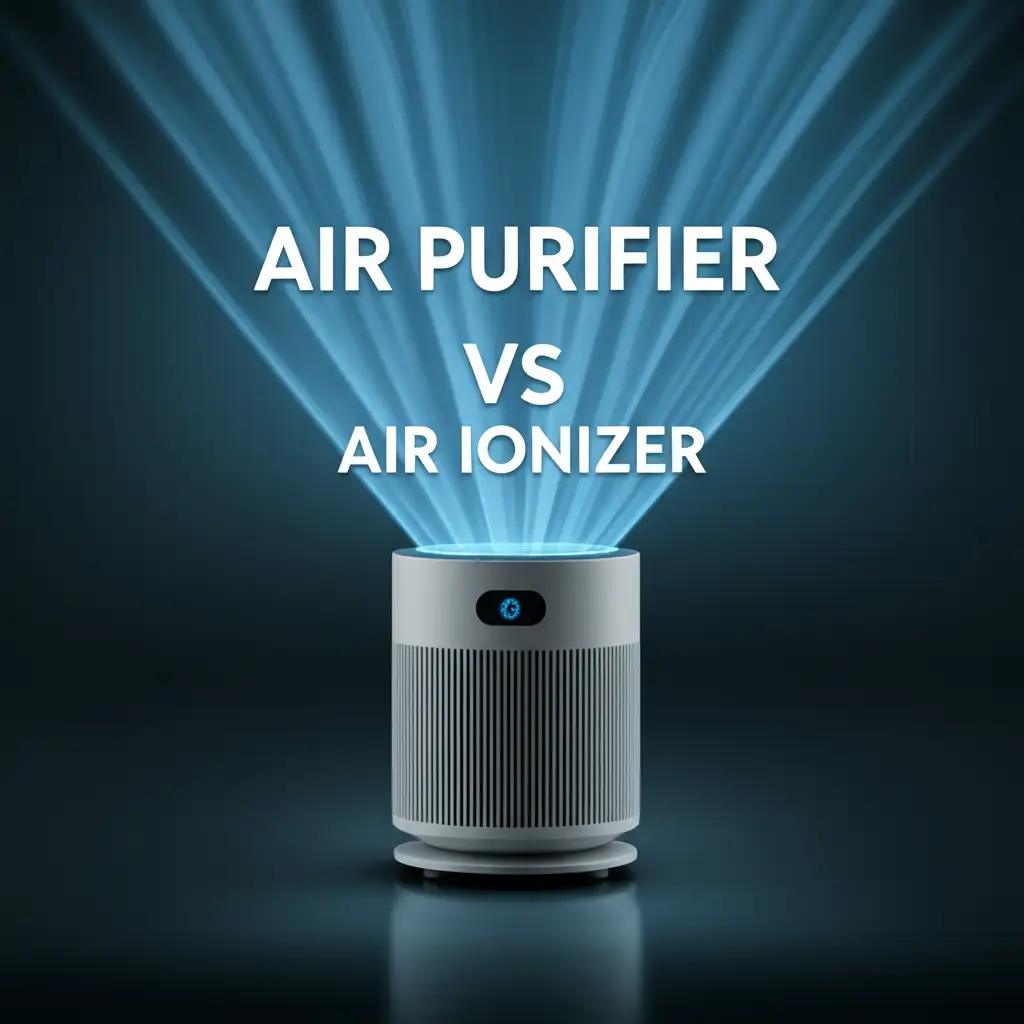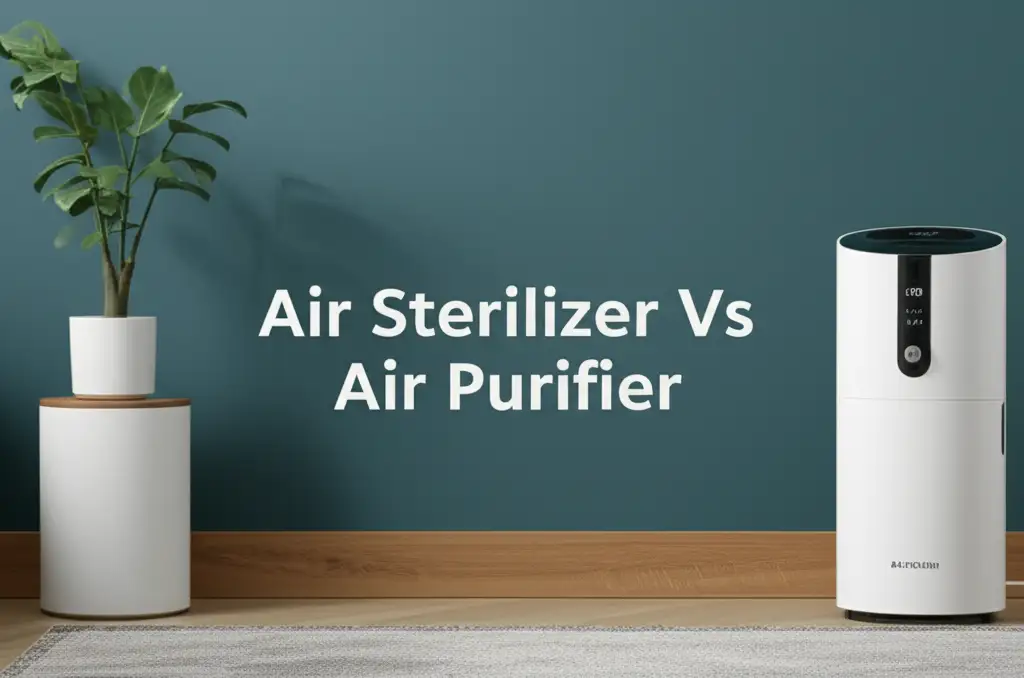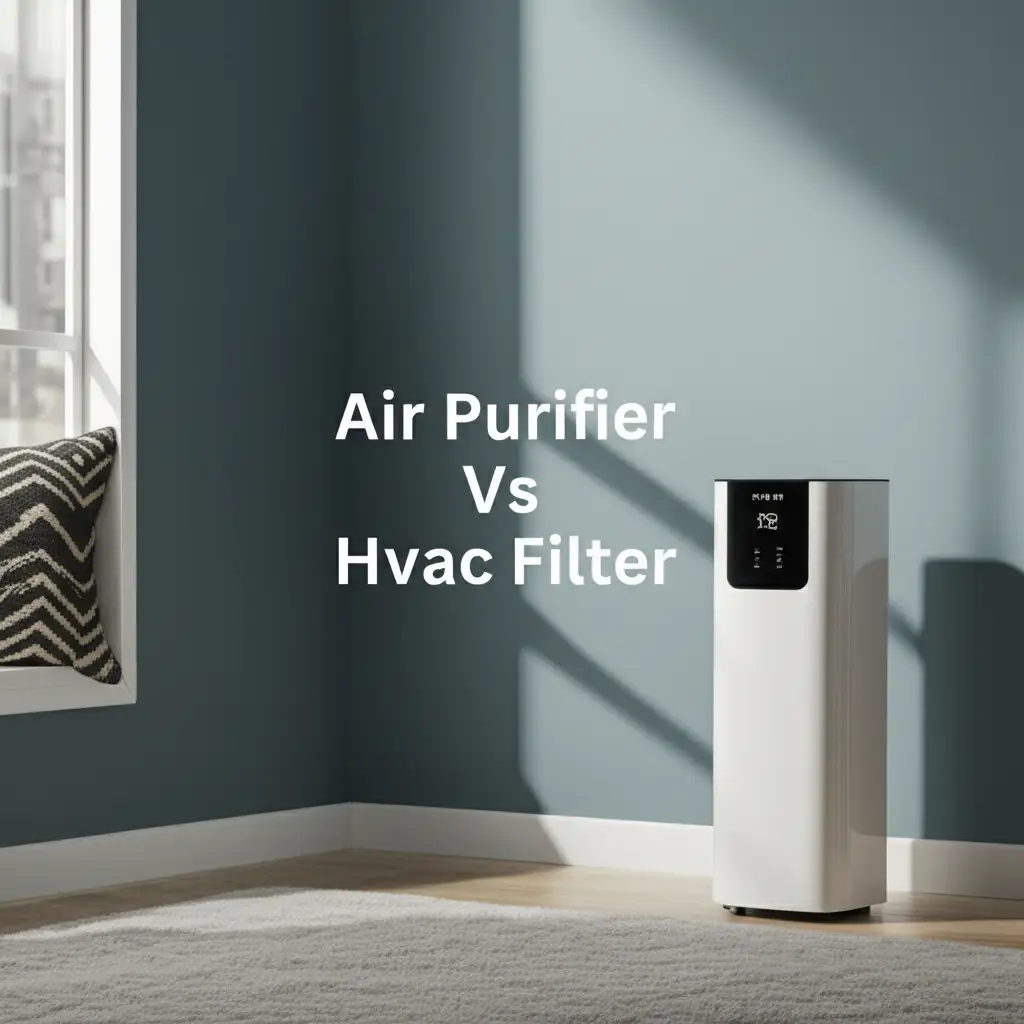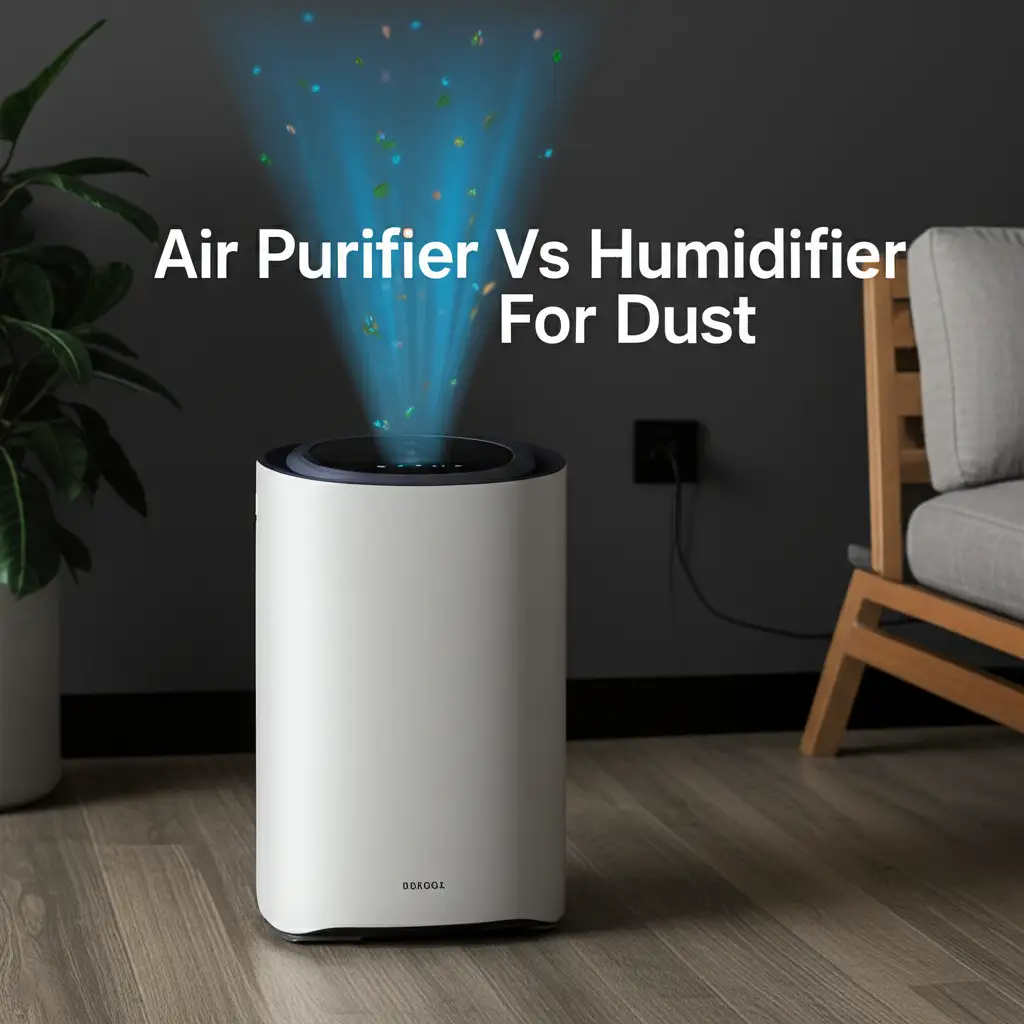· Elira Thomsen · Home Air Quality · 14 min read
Air Purifier Vs Hepa Filter
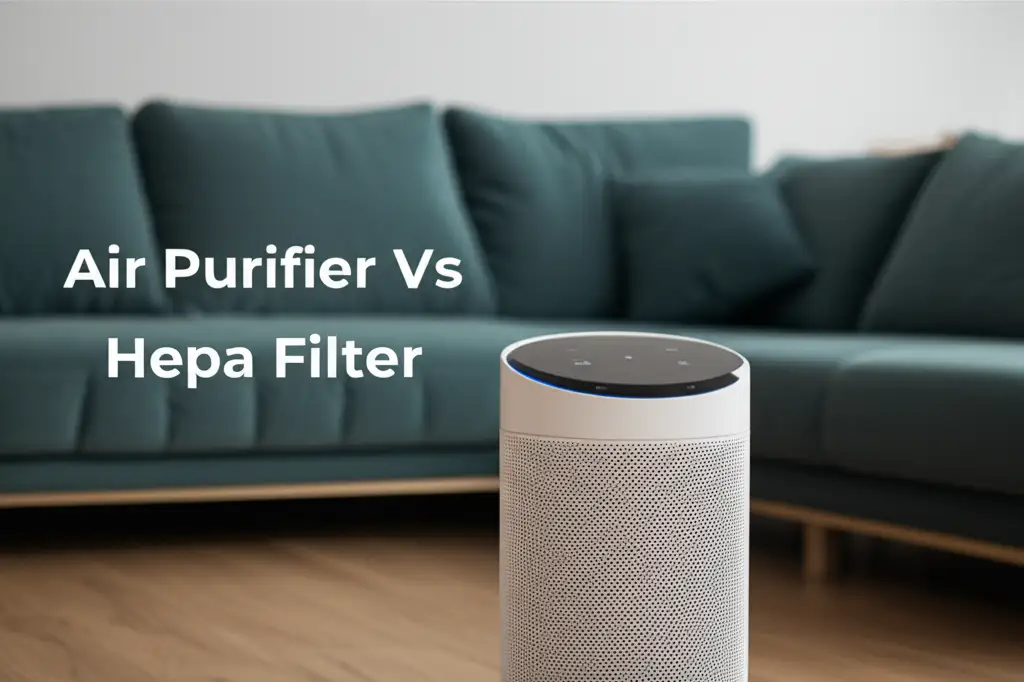
Air Purifier Vs Hepa Filter: Understanding the Core Differences
You want clean air in your home. You hear terms like “air purifier” and “HEPA filter” often. Many people use these terms interchangeably. However, they are not the same thing. Understanding the distinction is important for making smart choices.
An air purifier is a device designed to clean the air. It uses various methods to remove pollutants. A HEPA filter is a specific type of filter. It is often a key component inside an air purifier. This article will explain what each is. We will show how they work together. We will help you choose the best solution for your home air quality.
Takeaway:
- An air purifier is a complete appliance. It cleans air using different technologies.
- A HEPA filter is a specialized filter. It captures tiny airborne particles.
- Most effective air purifiers use a HEPA filter as their primary filtration method.
- Choosing an air purifier means considering its filter types and features.
- HEPA filters alone do not purify air; they need a fan system to draw air through them.
What is the core difference between an air purifier and a HEPA filter? An air purifier is a complete appliance with a fan and filter system that cleans indoor air. A HEPA filter is a specific, high-efficiency type of filter material. It is often the main component inside an air purifier.
What is an Air Purifier? A Complete System for Clean Air
An air purifier is a household appliance. Its job is to improve indoor air quality. It works by drawing air from a room. Then, it pushes the air through one or more filters. These filters trap pollutants. The clean air then returns to the room. This process reduces allergens, dust, odors, and other airborne particles.
Air purifiers come in many sizes. They have different features. Some are small and portable. Others are large units for whole homes. The effectiveness of an air purifier depends on its design. It also depends on the types of filters it uses. A good air purifier can make a big difference for people with allergies or asthma. It also helps anyone wanting fresher air.
Types of Air Purifier Technologies
Air purifiers use various methods to clean air. The most common type uses mechanical filtration. This involves physical filters like HEPA. Other technologies include activated carbon, UV-C light, and ionizers. Each technology targets different types of pollutants.
- Mechanical Filtration (HEPA): These purifiers use dense filter media. Air passes through, and particles get trapped. This is effective for dust, pollen, and pet dander.
- Activated Carbon Filters: These filters absorb odors, gases, and chemicals. They are excellent for smoke, cooking smells, and VOCs (Volatile Organic Compounds).
- UV-C Light: Some purifiers include a UV-C lamp. This light kills airborne bacteria, viruses, and mold spores. It adds an extra layer of purification.
- Ionizers/Electrostatic Precipitators: These devices release charged ions. The ions attach to particles in the air. This makes particles heavier, causing them to fall out of the air. Some people worry about ozone production from these. You should check if a model produces ozone.
An air purifier is a complete solution. It has a fan to move air. It has a housing to contain filters. It has controls to operate the unit. My family uses one in the living room. It really helps during allergy season.
HEPA Filter Explained: The Gold Standard for Particle Capture
A HEPA filter is not an air purifier itself. It is a highly effective filter type. HEPA stands for High-Efficiency Particulate Air. It is a mechanical air filter. It works by forcing air through a fine mesh. This mesh traps very small particles. The particles include pollen, pet dander, dust mites, and smoke.
A true HEPA filter meets a specific standard. It must capture 99.97% of particles. These particles must be 0.3 microns in size. Particles of 0.3 microns are actually the hardest to trap. Both larger and smaller particles are easier to catch. This makes HEPA filters highly efficient for many common allergens. They are essential for clean air.
How HEPA Filters Trap Particles
HEPA filters capture particles in three main ways:
- Interception: Larger particles follow the air stream. They touch a fiber and stick to it.
- Impaction: Medium-sized particles are too heavy to follow the air stream around fibers. They hit a fiber directly and stick.
- Diffusion: Very small particles move erratically. They collide with gas molecules. This causes them to hit and stick to fibers.
HEPA filters are made of a dense mat of randomly arranged fibers. These fibers are typically fiberglass. The tangled design provides a large surface area. This ensures high trapping efficiency.
True HEPA vs. HEPA-type Filters
It is important to understand the difference between “True HEPA” and “HEPA-type” or “HEPA-like” filters.
- True HEPA Filters: These filters meet the strict standard. They capture 99.97% of particles down to 0.3 microns. You will see this certification clearly stated.
- HEPA-type/HEPA-like Filters: These filters do not meet the strict True HEPA standard. They might capture a lower percentage of particles. They may not filter down to 0.3 microns effectively. They are often cheaper but less effective. Always look for “True HEPA” for best performance. I always check for this label when I buy new filters.
The Symbiotic Relationship: Air Purifiers and HEPA Filters
You now know an air purifier is a device. You know a HEPA filter is a component. Most high-quality air purifiers use a HEPA filter. The HEPA filter acts as the primary cleaner. The air purifier’s fan pulls air through this filter. This is how they work together.
Think of it like this: an air conditioner cools a room. The compressor and refrigerant are key parts of the air conditioner. You would not say a compressor is an air conditioner. Similarly, a HEPA filter is a vital part of many air purifiers. It is the engine of the cleaning process.
An air purifier without a HEPA filter might still clean the air. It could use other technologies like activated carbon or UV light. However, for trapping microscopic particles like allergens and dust, a HEPA filter is the gold standard. It is the most effective mechanical filter available for residential use. This combination creates a powerful air cleaning system. You get both particle removal and other benefits.
For optimal indoor air quality, I find this combination truly effective. Many health organizations recommend HEPA filtration. They recommend it for people with respiratory issues. It makes a significant difference in my home, especially during pollen season. The air feels much lighter.
Beyond HEPA: Other Filtration Technologies in Air Purifiers
While HEPA filters excel at capturing particles, air quality involves more than just particulates. Many air purifiers integrate multiple filtration stages. These stages address a wider range of pollutants. This multi-stage approach ensures comprehensive air cleaning. It targets gases, odors, and microorganisms.
- Pre-filters: These are the first line of defense. Pre-filters capture larger particles. They catch dust, hair, and lint. This protects the HEPA filter from getting clogged too quickly. Regular cleaning of the pre-filter extends the life of the main HEPA filter. My air purifier has a washable pre-filter, which is very convenient.
- Activated Carbon Filters: As mentioned before, these are crucial for gaseous pollutants. They have a porous structure. This structure absorbs odors from cooking, pets, and smoke. They also remove harmful chemicals like VOCs. If you have pet odors or chemical sensitivities, a good activated carbon filter is a must-have.
- UV-C Light Sterilization: Some purifiers use UV-C lamps. This light breaks down the DNA of airborne microorganisms. It neutralizes bacteria, viruses, and mold spores. This is a beneficial addition for germ-conscious households. It offers an extra layer of protection against sickness.
- Ionizers: These generate negatively charged ions. These ions attach to positively charged particles in the air. This makes the particles heavier. They then fall out of the air or stick to surfaces. While effective, some ionizers can produce ozone, a lung irritant. Look for ozone-free or low-ozone models.
A comprehensive air purification system combines these elements. For example, a pre-filter, followed by a True HEPA filter, and then an activated carbon filter, offers robust protection. Some models add UV-C or a safe ionizer. This layered approach ensures that your air purifier tackles many types of air contaminants. It does not just rely on one method.
Choosing the Right Air Purification Solution for Your Home
Selecting the right air purifier involves several considerations. You need to match the purifier’s capabilities to your needs. Thinking about these factors helps you make the best decision. A good choice will provide cleaner air efficiently.
- Room Size (CADR Rating): CADR stands for Clean Air Delivery Rate. It measures how quickly an air purifier cleans a room. Higher CADR means faster cleaning. Match the CADR to your room’s square footage. For example, a living room needs a higher CADR than a small bedroom. Always check the manufacturer’s recommended room size.
- Types of Pollutants: Identify what you need to filter.
- For allergens (pollen, dust mites, pet dander), a True HEPA filter is essential.
- For odors, smoke, or chemicals (VOCs), you need an activated carbon filter.
- For viruses and bacteria, look for models with UV-C light. Most effective units combine HEPA and activated carbon.
- Noise Level: Air purifiers have fans. Fans make noise. Check the decibel (dB) rating. A purifier for a bedroom should be quieter. Look for models with a sleep mode. This mode runs the fan at a lower, quieter speed.
- Maintenance and Filter Replacement: All filters need replacement or cleaning. HEPA filters usually last 6-12 months. Activated carbon filters last 3-6 months. Pre-filters might be washable. Consider the cost and availability of replacement filters. This is an ongoing expense. I find setting a reminder for filter changes very helpful. Just like you might clean other parts of your home for air quality, such as learning how to clean air vents, regular filter maintenance is key for your air purifier.
- Additional Features: Some purifiers offer smart features. These include Wi-Fi connectivity, air quality sensors, and auto modes. Auto mode adjusts fan speed based on detected air quality. Child locks and filter indicators are also useful. You might also want to consider general home cleanliness. Dust on surfaces, including high ones, can become airborne. Keeping areas clean, like understanding how to clean a ceiling, also plays a role in reducing airborne particles.
By carefully evaluating these points, you can choose an air purifier that meets your specific needs. This ensures you get the most effective solution for your home’s air.
Maintenance and Longevity: Keeping Your Air Purifier Effective
An air purifier is an investment in your health. Proper maintenance ensures it works well for a long time. It also guarantees optimal air cleaning performance. Neglecting maintenance can reduce its effectiveness. It can even shorten the unit’s lifespan.
The most critical maintenance task is filter replacement. Air filters, especially HEPA and activated carbon, collect pollutants over time. They become saturated. When saturated, they cannot capture new particles. This reduces airflow and purification efficiency. The air purifier works harder, using more energy.
- HEPA Filter Replacement: True HEPA filters cannot be washed. Washing them destroys their fiber structure. They generally need replacement every 6 to 12 months. This depends on usage and air quality. Check your purifier’s manual for specific recommendations.
- Activated Carbon Filter Replacement: These filters absorb odors and chemicals. They become saturated faster than HEPA filters if your air has many gaseous pollutants. Replace them every 3 to 6 months. Some purifiers combine HEPA and carbon into one filter.
- Pre-filter Cleaning: Most pre-filters are washable or vacuumable. Clean them every 2-4 weeks. This prevents larger particles from clogging the main filters. A clean pre-filter extends the life of your expensive HEPA filter.
- Unit Cleaning: Wipe down the outside of the air purifier regularly. Use a soft, damp cloth. Clean the air intake and output vents. This prevents dust buildup on the unit itself.
Regular maintenance is not just about filters. It is about keeping the entire system running smoothly. Just as you might clean other types of filters, like learning how to clean pool cartridge filter, understanding the specific needs of your air purifier’s filters is important for peak performance. A well-maintained air purifier continues to deliver clean, fresh air for years. Ignoring maintenance means your air purifier becomes less effective. It could even circulate old pollutants. I make it a point to check my filters monthly.
Benefits of Improving Indoor Air Quality with Air Purifiers
Improving indoor air quality offers many health benefits. An air purifier, especially one with a True HEPA filter, plays a crucial role. Clean air contributes to a healthier living environment for everyone. These benefits extend beyond just breathing easier.
- Allergy and Asthma Relief: This is a major benefit. Air purifiers remove airborne allergens. These include pollen, dust mites, pet dander, and mold spores. Reducing exposure to these triggers can significantly lessen allergy symptoms. It can also help manage asthma attacks. Many people with respiratory issues find great relief. I know my allergies are much better when my air purifier runs.
- Reduction of Dust and Other Particulates: Air purifiers constantly remove dust. They also remove dirt particles from the air. This results in less dust settling on surfaces. It means less time spent dusting. It also means fewer tiny particles entering your lungs.
- Elimination of Odors: Activated carbon filters are excellent for odors. They remove smells from cooking, pets, smoke, and household chemicals. This leaves your home smelling fresh and clean. It gets rid of stale or unpleasant lingering smells.
- Capture of Airborne Germs and Viruses: Some air purifiers include UV-C light. This technology can kill airborne bacteria and viruses. This helps reduce the spread of illnesses, especially during cold and flu season. While not a cure, it adds an important layer of defense.
- Improved Sleep Quality: Cleaner air can lead to better sleep. Reduced allergens mean less congestion and coughing at night. A quieter air purifier can also provide soothing white noise. This creates a more peaceful sleeping environment.
- Overall Well-being: Breathing clean air just makes you feel better. It can reduce headaches and fatigue. It promotes a general sense of comfort and health in your home. Investing in an air purifier is an investment in your family’s health and comfort.
These benefits highlight why so many homes now use air purifiers. They address a fundamental aspect of healthy living. Clean air is a basic need.
FAQ Section
Q1: Can I just buy a HEPA filter without an air purifier? No, a HEPA filter by itself cannot purify air. It is a filter material. You need a complete air purifier unit. This unit contains a fan to pull air through the HEPA filter. Without the fan, the filter cannot capture airborne particles.
Q2: How often should I replace HEPA filters? You should replace True HEPA filters every 6 to 12 months. This depends on usage, air quality, and the manufacturer’s recommendations. Activated carbon filters might need changing more often, usually every 3 to 6 months. Regular replacement ensures optimal performance.
Q3: Are all air purifiers effective against viruses? Not all air purifiers are effective against viruses. For virus removal, look for purifiers that specifically mention UV-C light or powerful True HEPA filtration. True HEPA filters can capture tiny virus-carrying particles. UV-C light can neutralize the viruses themselves.
Q4: What is CADR and why does it matter? CADR stands for Clean Air Delivery Rate. It measures how quickly an air purifier cleans air in a room. A higher CADR means the purifier works faster and is suitable for larger spaces. Matching the CADR to your room size ensures effective air cleaning.
Q5: Do air purifiers help with pet odors? Yes, air purifiers equipped with activated carbon filters are very effective against pet odors. While HEPA filters capture pet dander, activated carbon absorbs the smelly gases. For best results, choose a model with both a True HEPA filter and a robust activated carbon filter.
Conclusion
Understanding the difference between an air purifier and a HEPA filter is key. An air purifier is the entire appliance. It actively cleans the air in your home. A HEPA filter is a critical component. It is the gold standard for trapping tiny particles. Most effective air purifiers rely on a True HEPA filter to do their main work. They often combine it with other filtration technologies for comprehensive cleaning.
Choosing the right air purifier means considering your room size, specific pollutants, and maintenance needs. By selecting a unit with a True HEPA filter and appropriate additional stages, you can significantly improve your indoor air quality. This leads to many benefits, including allergy relief, odor reduction, and a healthier home environment. Invest in an air purifier today. Breathe easier and enjoy cleaner air. Your health will thank you.


